The Fascinating Chichen Itza: The All You Need Guide for First-Time Visitors.
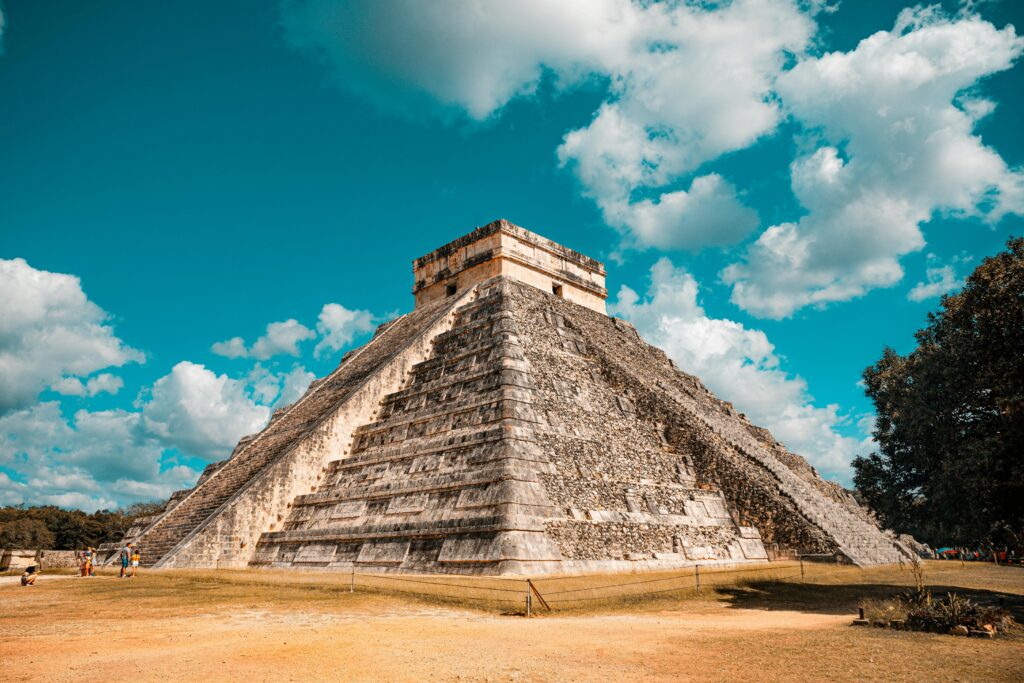
Mayan civilization has to be one of my favorite topics to speak about other than travel. Chichen Itza makes my my mind go a million miles an hour.
It is easily one of the most awesome historical sites in the Yucatan (and most of the world) if you ask me.
It is one of the “New” Seven Wonders of the World and for great reason. Recent movies like Black Panther 2 have highlighted Mayan Culture as well as referenced the site of Chichen Itza.
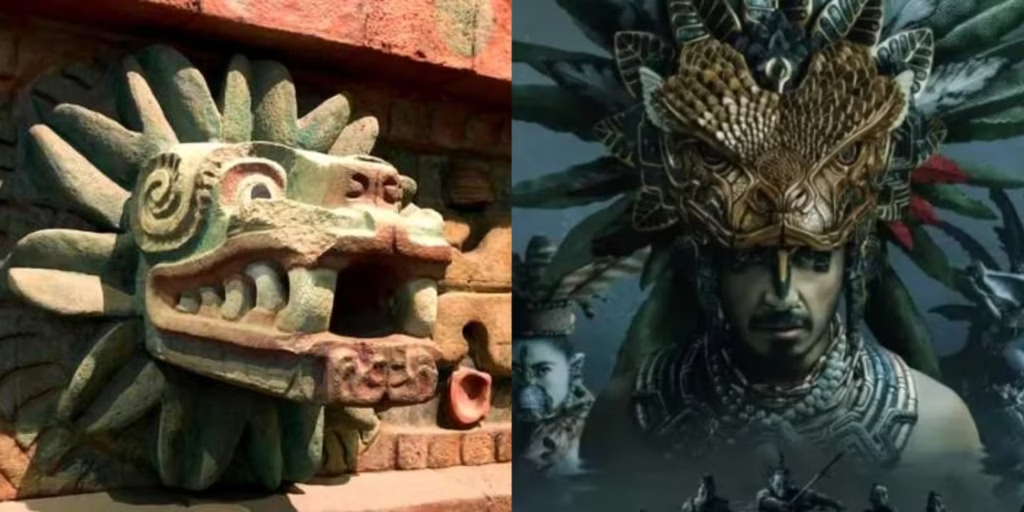
It was also awesome seeing the main character named after the king of Chichen Itza.
Read more about the movie’s awesome references here.
If you are looking for things to do in Cancun or you were considering going to Tulum ruins…. I highly recommend going out of your way to go to Chichen Itza.
Follow the guide below for all the information you need on Chichen Itza.
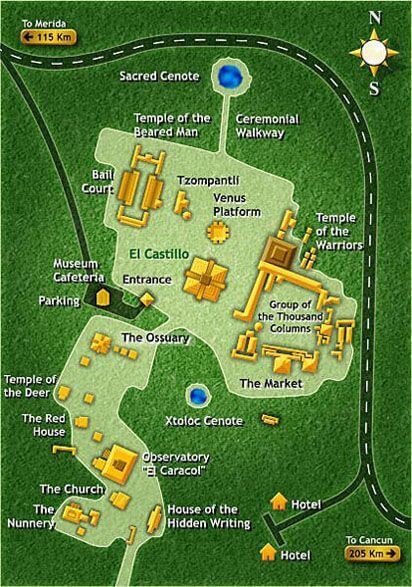
What Is Chichen Itza?
Chichen Itza is the name referred to the historical site of one of the most significant Mayan sites known to modern day. It is the largest of the Mayan sites in Mexico.
This site dates back to around 600 AD and is most known for its iconic pyramid El Castillo (Aka Temple of Kulkulkan).
But the site of Chichen Itza is much more than that and the rituals are mind blowing knowing how advanced their society was.
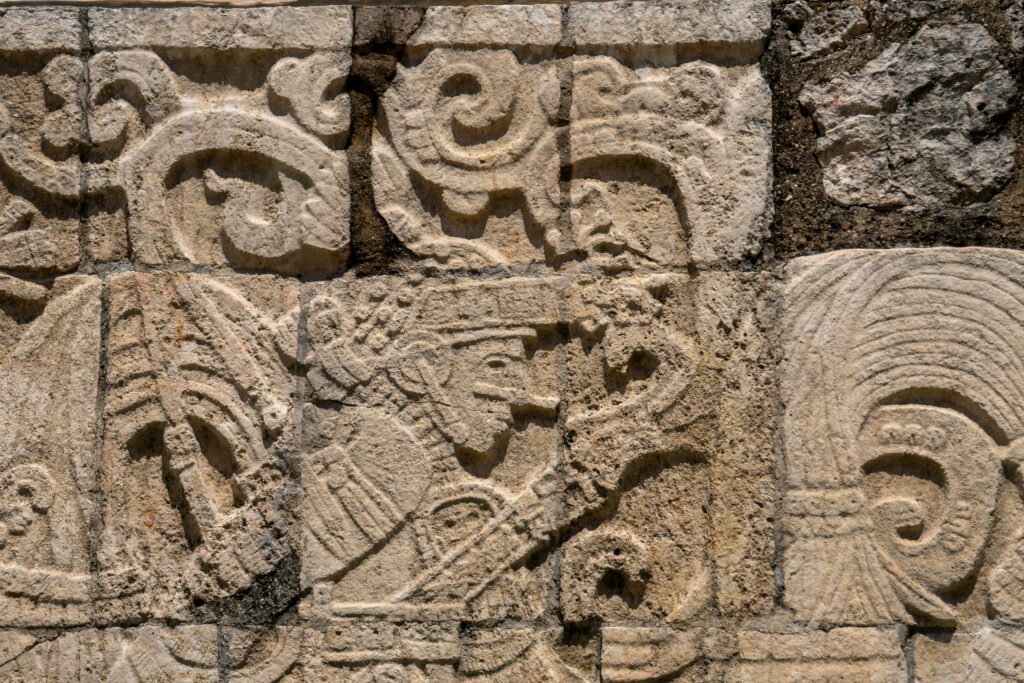
Chichen Itza is comprised of:
- El Castillo (Temple of Kulkulkan – The Feather Serpent God)
- Great Ball Court (games of ancient Mayan tribes)
- Temple of The Warriors & Group of a Thousand Columns
- El Caracol (The Observatory)
- The Marketplace & More Ruins
- Souvenir Stands & Local Vendors
Pro tip
When we visited the site the first time, it felt like we were staring at some rocks for the most part. We were told by a friend that it is a must to have a tour guide when we decided to go again and we took our friends advice the second time.
A completely different experience! I highly recommend a guided tour for Chichen Itza.
Having a passionate and knowledgable tour-guide can really bring to life your experience at Chichen Itza.
Our guide made sure we felt like we got as close to experiencing society back in the Mayan days.
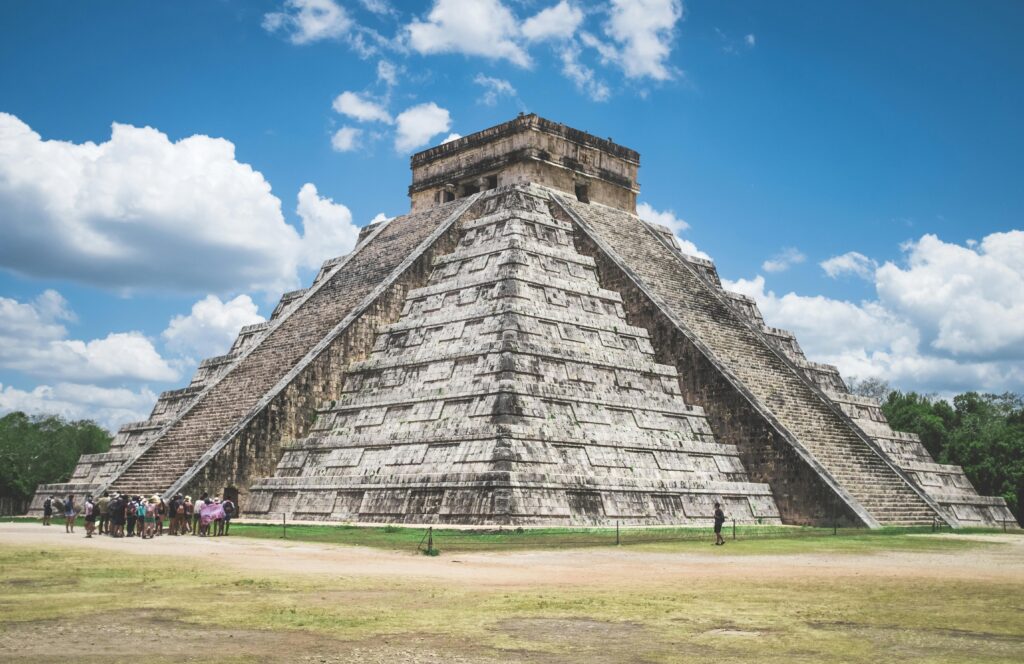
How to Get to Chichen Itza
From Cancun
- By Car: ~2.5 hours (120 miles/200 km). The drive is safe and straightforward via Highway 180D (toll road).
- By Bus: ADO buses run daily from Cancun’s main terminal. Expect a 3-hour ride.
- Guided Tour: Many companies offer day trips with hotel pickup, guide, lunch, and sometimes a cenote stop.
From Playa Del Carmen:
- By Car: ~2.5 hours (110 miles/180 km).
- By Bus: Also possible via ADO, but fewer direct options than from Cancun.
- Tours: Similar to Cancun—plenty of options.
From Cruise Ports (Progreso, Cozumel)
- Progreso: 2 hours by car/bus.
- Cozumel: Ferry to Playa del Carmen, then bus/car as above.
- Pro Tip: If you are coming from a cruise, make sure to book a tour that has a “return to ship guarantee”.
Navigation/GPS
If you plan on renting a car and driving on your trip, I highly recommend you speak to your cell phone provide and getting gps coverage in Mexico.
Some cell phone providers already provide service to this region and using Apple or Google maps to navigate is fairly easy.
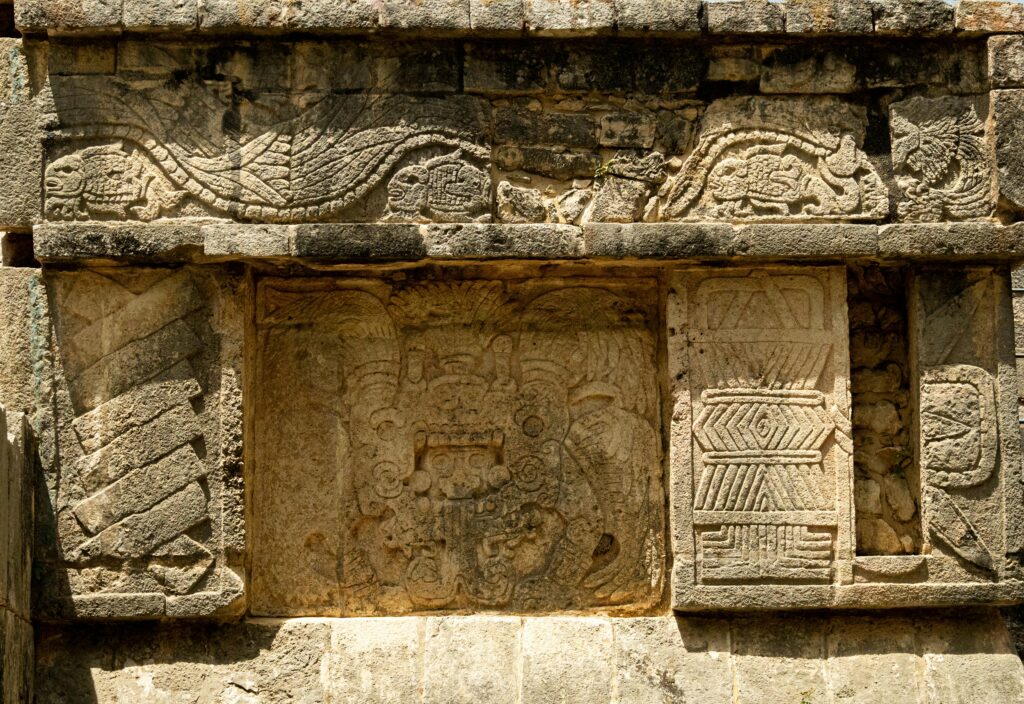
Entry Fees & Hours
General Admission (at the time of writing this post)
- Foreigners: ~$35 USD (combination of federal and state fees)
- Mexican citizens: Lower rates (ID required)
- Children under 13 are free.
Hours of Operation & Peak Hours
- 8:00 AM – 5:00 PM daily (last entry 4:00 PM)
- Peak Hours: 11 am – 1:30 Pm
- Best Time to Visit: Arrive at opening to beat crowds and heat.
Parking & Extras
- Parking: ~$2–3 USD
- Locker Rentals: Available at entrance
- Restrooms: At main entrance
What to Do at Chichen Itza
El Castillo (Aka Temple of Kulkulkan)
The main attraction is El Castillo.
Here you will see the 98 foot temple that was constructed by the Mayans in approximately 8th – 12th century AD.
This temple was far ahead of its time.
The temple is a sign of the advanced architectural ability of the Mayans. The side of the temple shows the head of the Feather Serpent God and on certain times of the year, the shadows of the pyramid will reveal the whole image of the Feather Serpent God.
This is a representation of the Serpant God making his way down the temple.
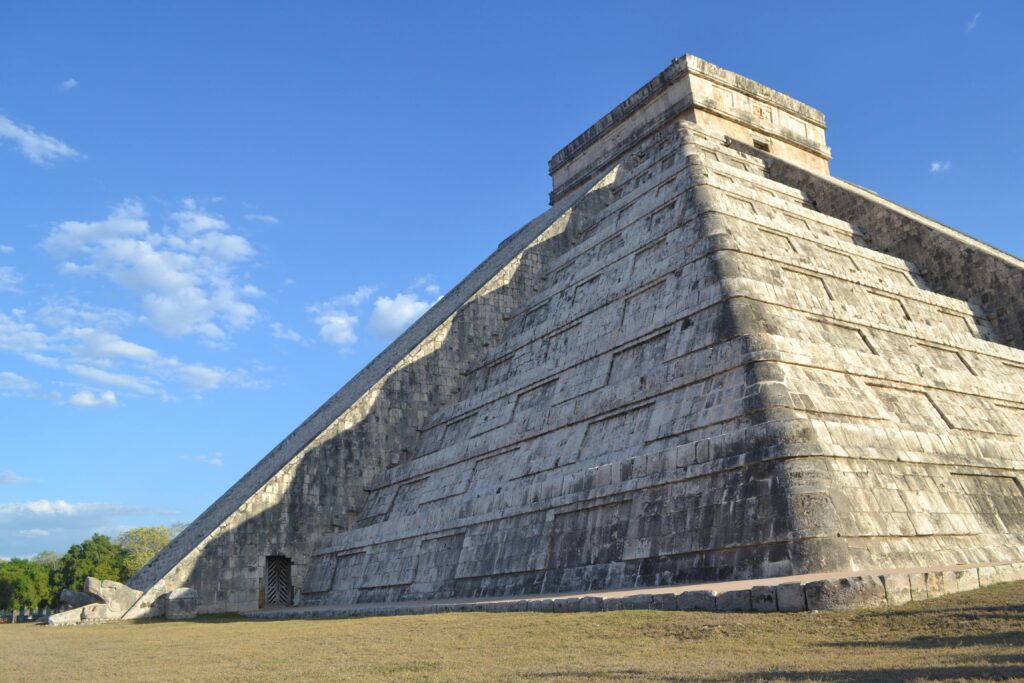
In the 1930’s archeologists discovered that this was actually 2 pyramids in 1. The mayans constructed an outer shell of the same pyramid on top of the first one. Some scans also lead archeologists to believe there is a third pyramid.
Advanced Mathematics and Astrology
The Mayans had an advanced “Maya Haab” calendar which was the first civilization to adopt the 365 day calendar that we know today.
The 9 steps on each side of the pyramid represent the 18 months on the Haab Calendar.
The Haab calendar accounted for 360 days of the year but the 5 extra days are symbolized by 5 decorative features on top of the pyramid.
Each stair case on the sides of the pyramid total 365 steps when added up… representing the 365 day calendar.
The Maya made sure to incorporate all of the symbols into their archetecture.
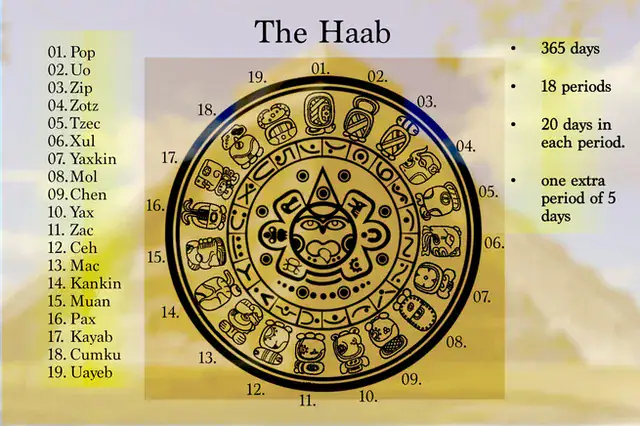
A Secret Chamber
A secret chamber located on top of the temple, the “Red Jaguar Throne” where the king used to sit. From this throne the king would watch countless human sacrifices to the Rain God – “Chaac”.
The throne was made of materials not found in the geographical location of Chichen Itza. A red stone carved into a Jaguar with emerald stones. A sign of power.
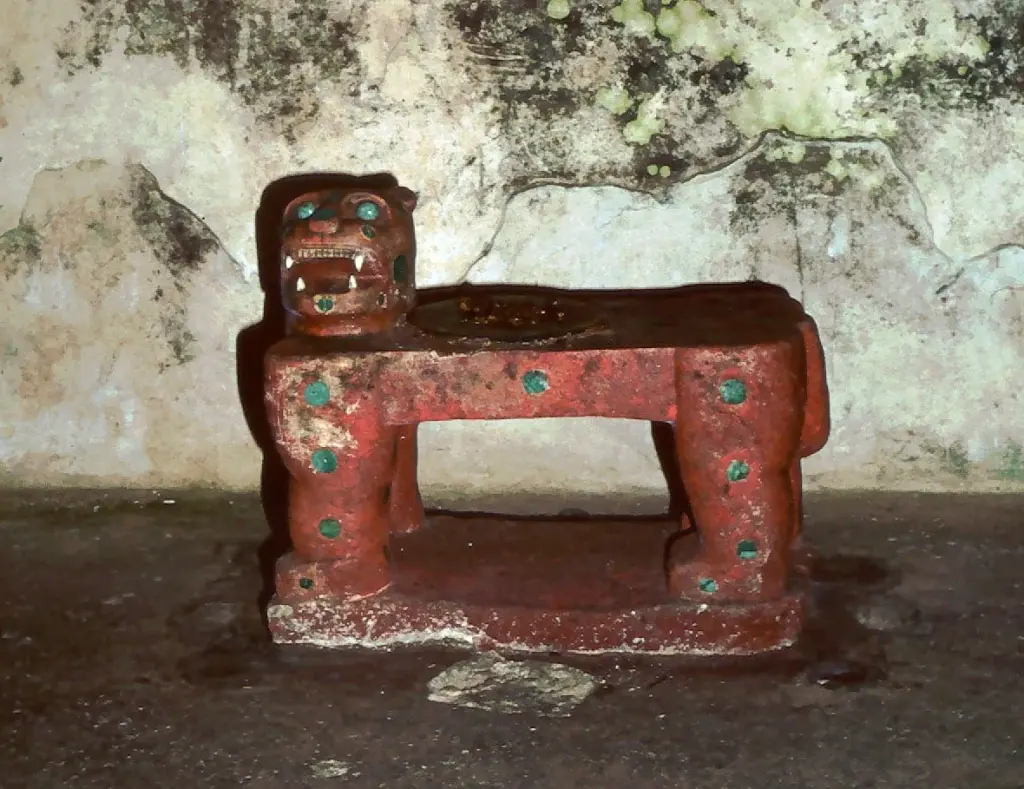
A “Chacmool” which is a statue resembling a figure receiving the human sacrifices lies in front of the kings throne.
Human bones are confirmed to be embedded on the wall behind the Jaguar Throne.
Archeologists believe that the human remains from sacrifices are in a vailed crypt below the throne as well as very important figures buried behind the wall – including the king.
This chamber and entry to the temple have been closed off to the public for preservation reasons.
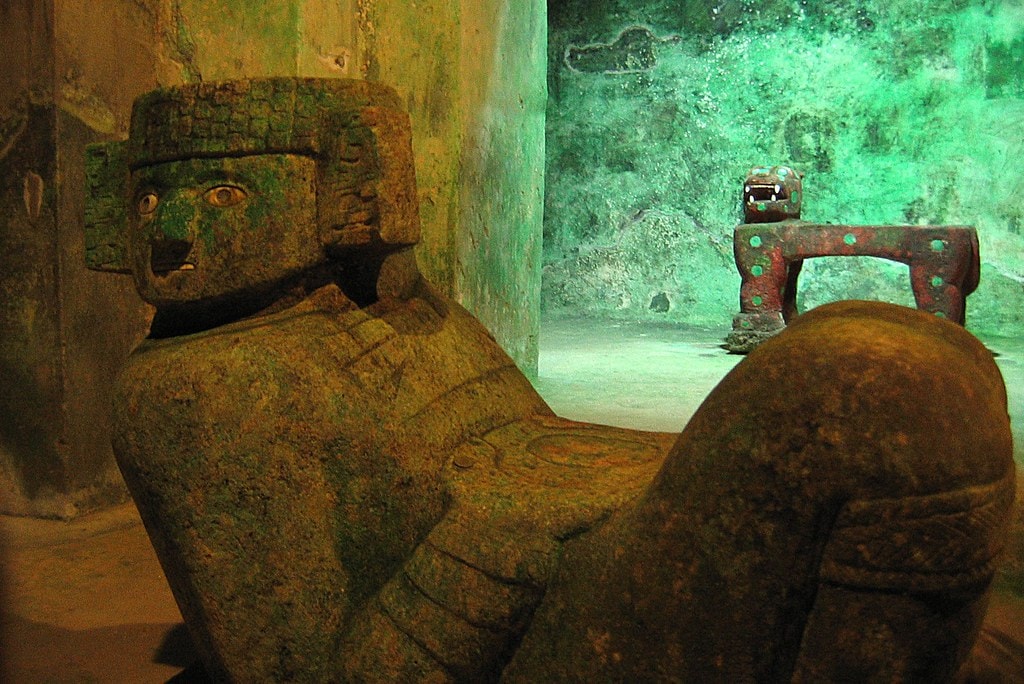
The Quetzal Bird
A phenomenon that occurs at the base of the pyramid is the “clap”.
Once close to the pyramid, a loud clap will echo off of the pyramid and make the sound of the call of the Quetzal bird.
The Home of the Gods – Cenotes
Natural Cenotes are birthed underneath the ground around Chichen Itza. The Mayans believed that this was the opening to the “underworld”.
Cenotes are natural fresh water preserves that provided water to the civilizations.
To read more about these phenomenal mother nature pools and which Cenotes are best to experience – check out my post here.
Most of these Cenotes are accessible and available for the public to swim in. Most tours also include access to the Cenotes so be ready with your swimming trunks and dive in!
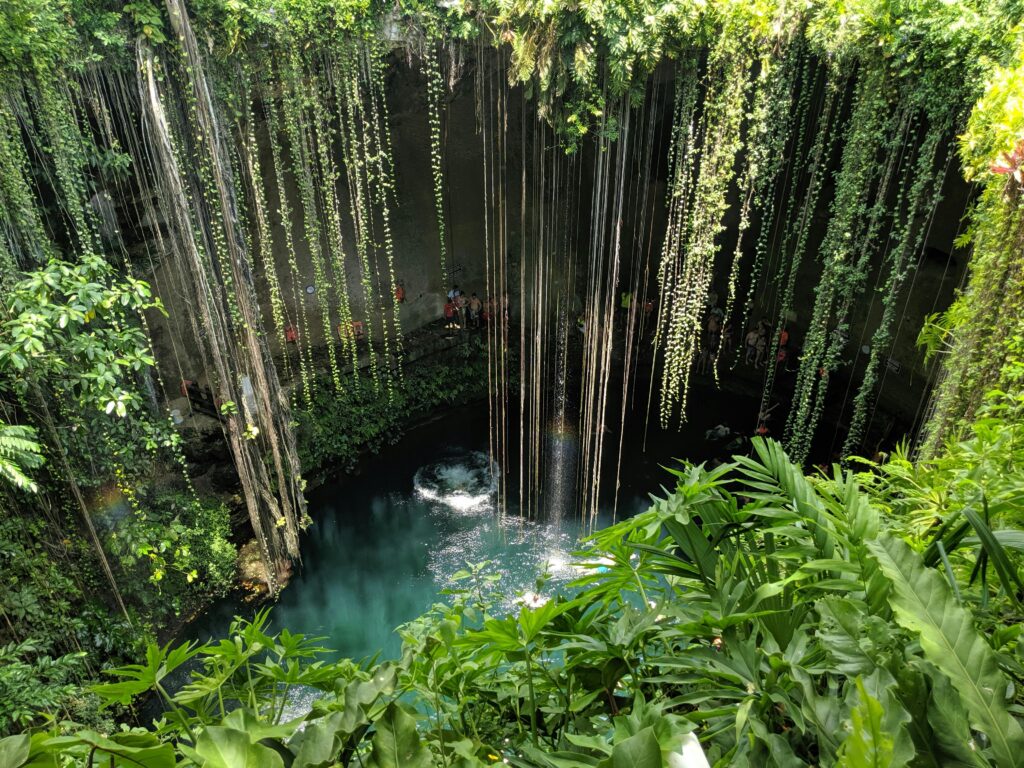
The Great Ball Court
The largest of all great ball courts found in Mesoamerica that was used by the Mayans.
It was the location of the Great Maya Ball Game. This was considered a spiritual sport with deep religious meanings and even human sacrifices.
Just like previous architects, the advancement is notable. A clap on one end of the court can be heard on the other end of the court.
The Great Ball Court makes you feel like you are the player in the arena and the adrenaline that these old players used to feel.
The game represents good/evil, day/night and life/death.
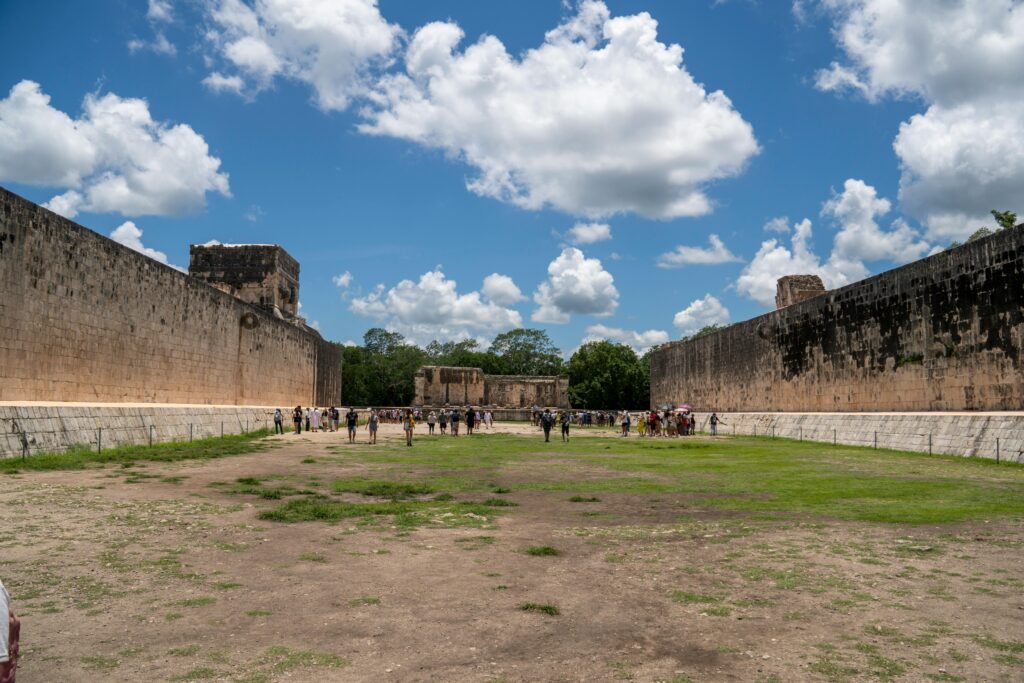
Temple of the Warriors & Group of a Thousand Columns
One of the most striking structures at Chichen Itza. A pyramid built with columns flanking the main building.
The pyramid was believed to be a “military” style base used for war rituals. Another “Chac Mool” statue can be found up top of the pyramid where human sacrifices were believed to be performed.
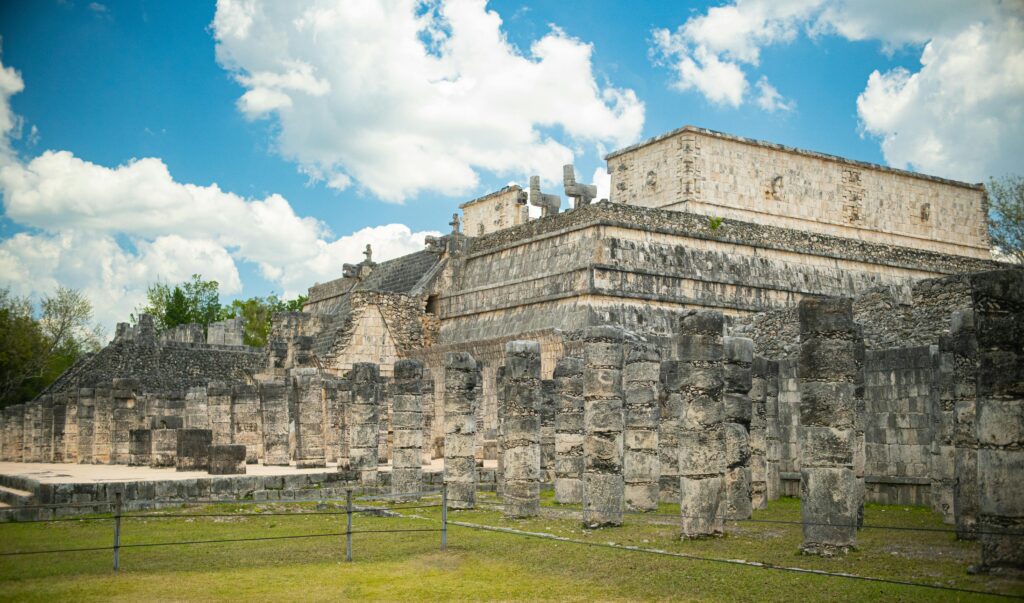
Group of a Thousand Columns
The Temple of the Warriors is flanked by a thousand columns that was believed to once be holding a roof above it.
Each column decorated with carvings of warriors, also believed to be training grounds for the Mayan soldiers.
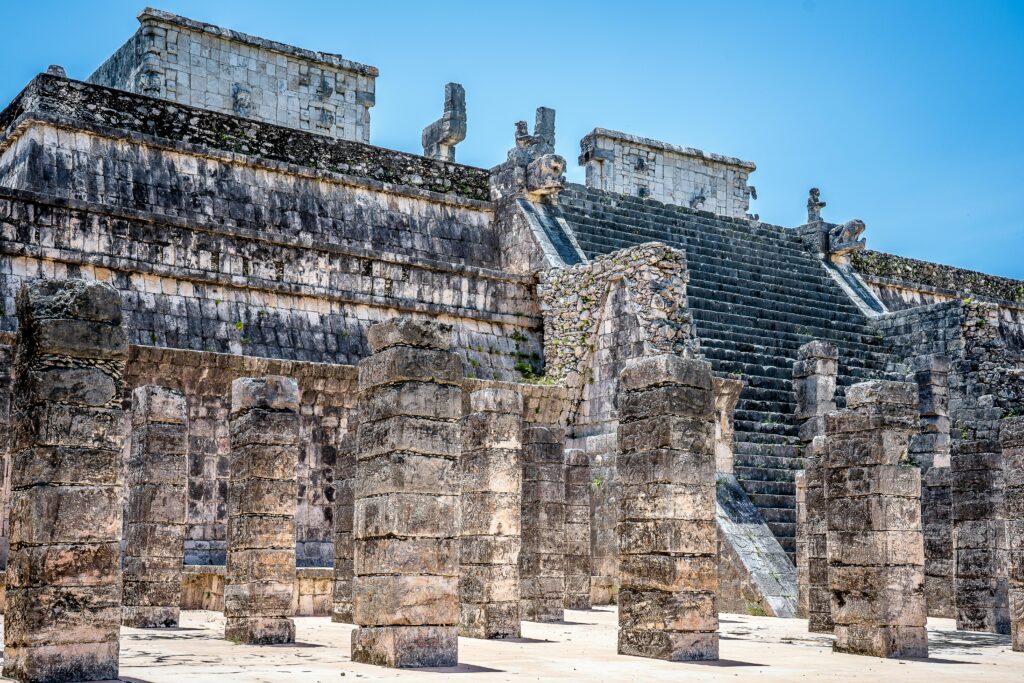
El Caracol (The Observatory)
The Mayans were advanced when it comes to astronomy and El Caracol was proof of this.
This ancient observatory was built like a snail due to its spiraling stair case. The windows and doors are aligned with key celestial events – solstices and movement of certain planets.
The skies were always tracked and its fascinating knowing that they were able to achieve such advancements in a time that most of this information was vastly unknown.
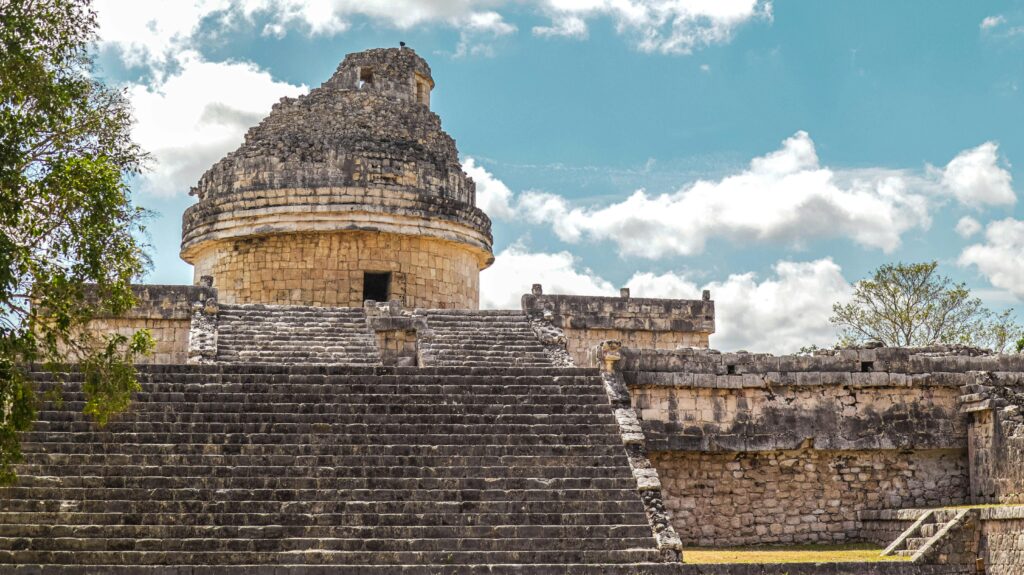
The Other Ruins
The grounds of Chichen Itza are vast and there is plenty to see.
Make sure you bring your walking shoes and stroll around to see all the other ruins. All the other structures are beautiful and breath taking.
- Temple of the Jaguars
- Platform of the Skulls (Tzompantli)
- Platform of the Eagles and Jaguars
- The Akab Dzib (House of “Mysterious Writing”)
- Temple of the Bearded Man
- The Temple of Small Tables
- The Steam Bath (Temazcal)
- The Nunnery
- The Church (La Iglesia)
- The Red House (Casa Colorada)
- The Ossuary (High Priests Grave)
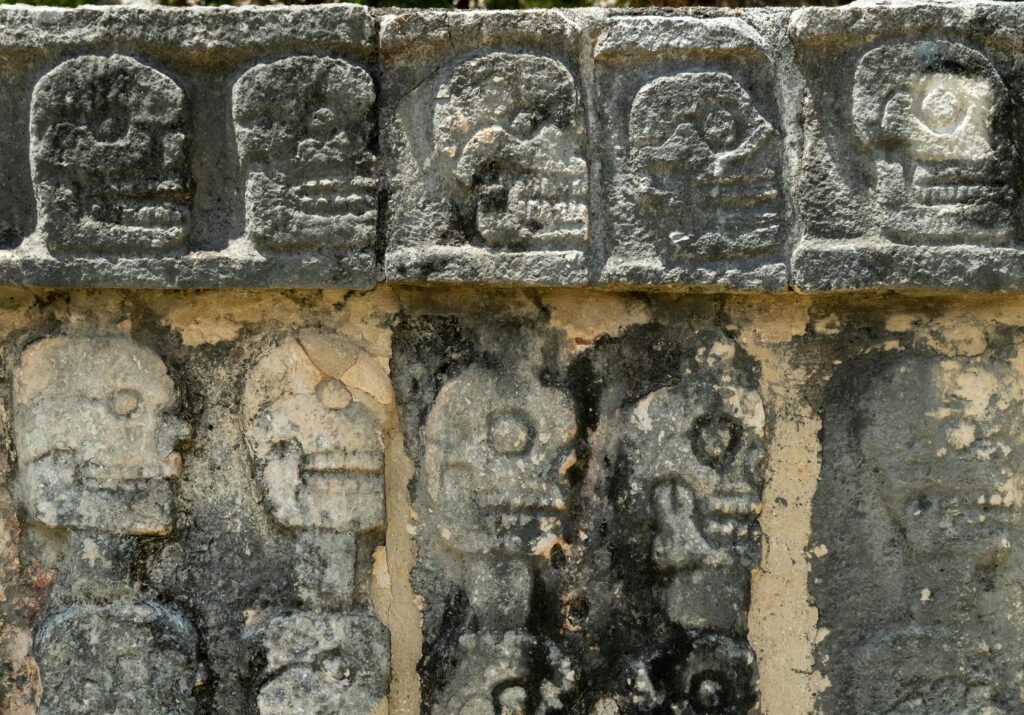
Guided Tours & Are they Worth It?
If you are asking me, absolutely they are worth it!
As you read before, Chichen Itza is vast and the history can’t all be explained in one blog post. An expert tour guide will help you bring your experience to life.
It is an investment of time to visit Chichen Itza regardless where you are coming from – might as well make the most of it!
Also most tours will cover transportation, entry fees and sometimes snacks/food/drinks.
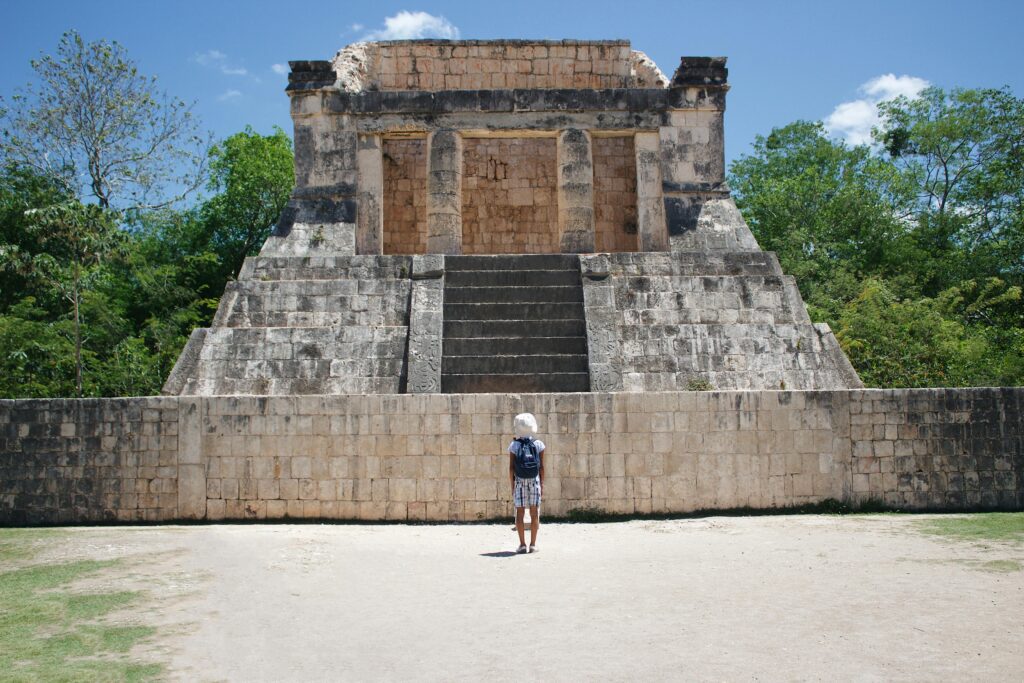
What to Bring to Chichen Itza
Treat Chichen Itza like a very mild hike up a mountain. Nothing too strenuous, but requires some effort nonetheless.
- Shoes with good grip (lots of uneven ground and stones)
- Hats, sunscreen, bugspray and sunglasses (lots of open land)
- “sporty” clothing
- Water canister (it can get hot and humid quick!)
- Pesos for entrance, parking tolls, snacks, etc. (visa and Mastercard generally accepted for entry fees. American cash might or might not be accepted)
- Any professional cameras (Drones not allowed without authorization)
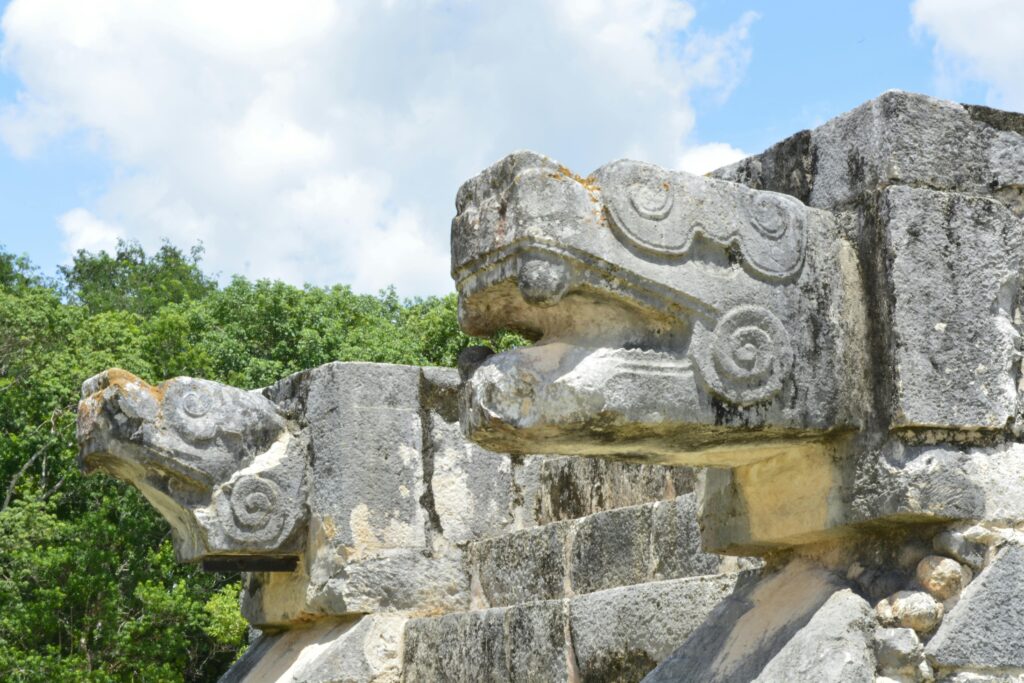
Facilities at Chichen Itza
Food
One restaurant is located at the enterance as well as some small snack stands.
Be sure to grab what you need at any of those options as there are no food options located inside Chichen Itza near the ruins/pyramids.
Restrooms
Same with the food options, restrooms are only located before you enter the grounds. Use any facility you might need ahead of time before entry!
Cenote Ik Kil
One of the most famous Cenotes in the Yucatan, Cenote Ik Kil is absolutely amazing.
Only 10 minutes away from Chichen Itza, Ik Kil can be accessed easily! Bring your swimwear and get ready to dive into one of the best fresh water pools you can access.

The Town of Valladolid
If you are hunting for an authentic Mexican experience, I can’t recommend Valladolid enough!
Located about 45 minutes from Chichen Itza, Valladolid is known for its historic architecture, local vibe and colorful streets.
The main square is beautiful and you can also see sights like the famous San Servacio Cathedral.
Valladolid is for those looking for local markets, traditional food and rich culture. Perfect for a stroll after visiting Chichen Itza.
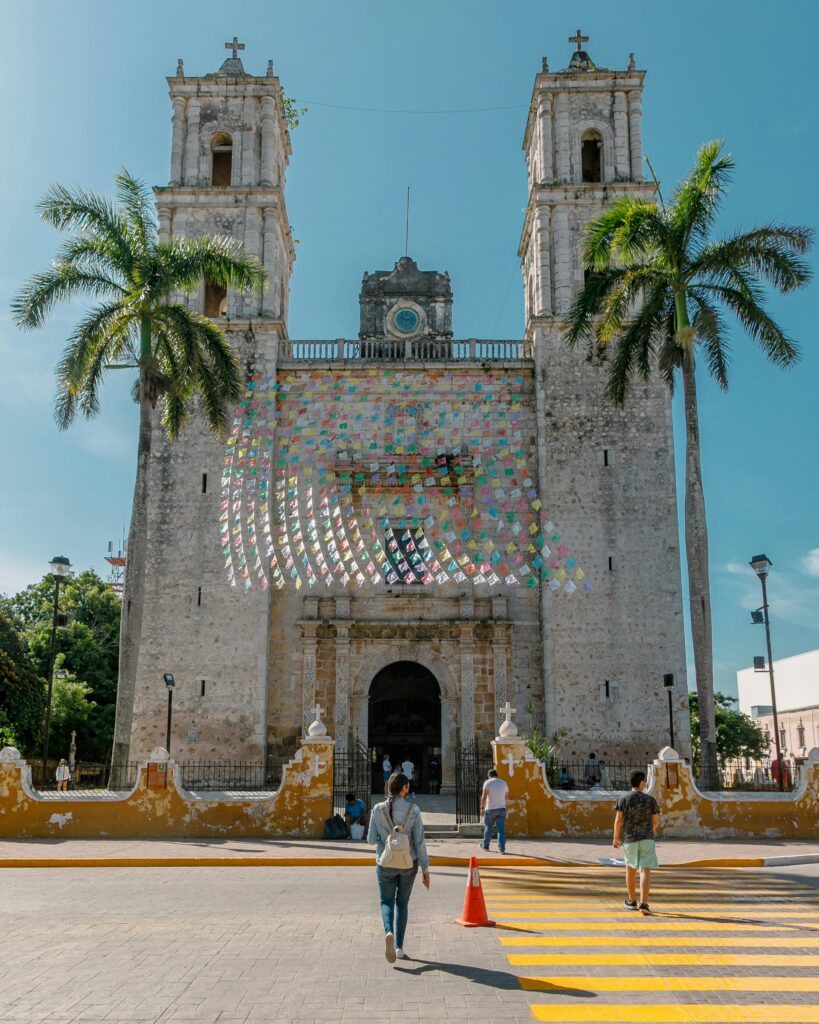
FAQ’s
Can you climb Chichen Itza?
Climbing Chichen Itza has been banned since 2006 mainly to preserve the historical building.
Is Chichen Itza wheelchair accessible?
Having a wheelchair is possible however as long as the visitor understands that some areas will be hard to view due to uneven ground.
When is the best time to visit Chichen Itza?
I highly recommend getting to Chichen Itza at opening hours. Less traffic and “cooler” weather. By the time the weather starts to really heat up, making your way to Cenote Ik Kil is perfect to cool off.
If you want great photos at Chichen Itza, I highly recommend arriving early or staying late. Much less crowds.
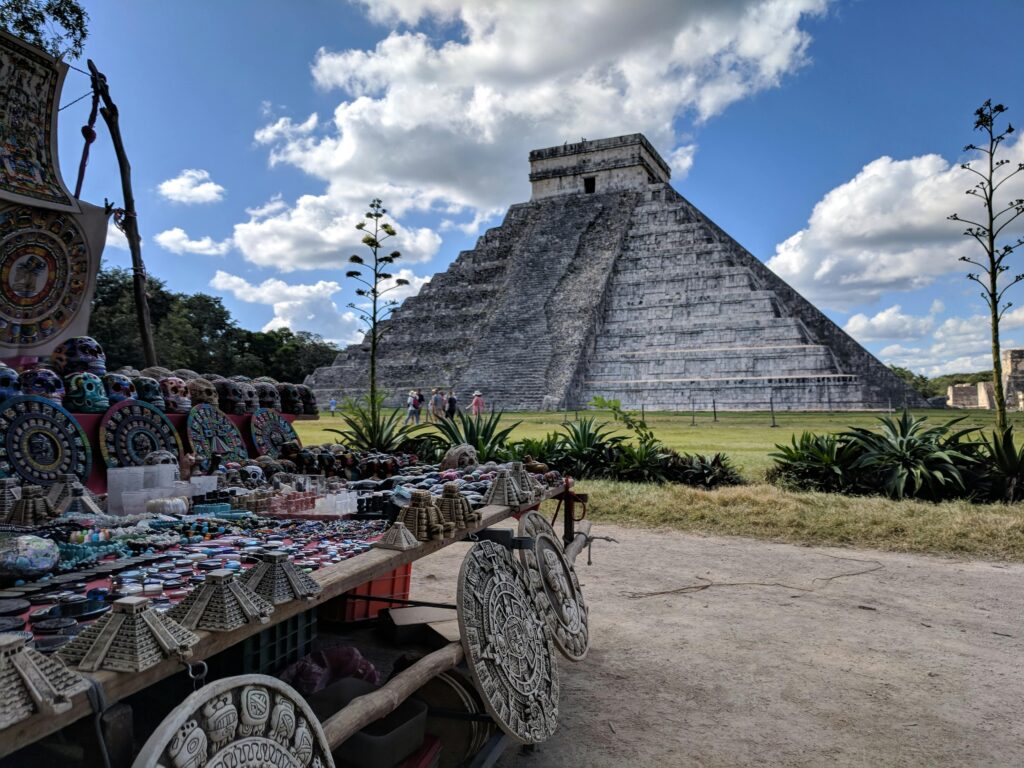
Can I swim at the cenotes in Chichen Itza?
No, the cenotes located on the grounds of Chichen Itza are barred from swimming due to preservation. However, Ik Kil is near by to access.
Is Chichen Itza open every day?
Yes, 365 days a year!
Are pets allowed at Chichen Itza?
Unfortunately no, pets are not allowed on the grounds of Chichen Itza.

Can I bring food inside Chichen Itza?
Unfortunately food is not allowed inside the grounds of Chichen Itza. However, water is.
Are there bathrooms inside the ruins of Chichen Itza?
Unfortunately no. Bathrooms are only located at the entrance so plan accordingly.
Can I hire a tour guide at the entrance of Chichen Itza?
Yes a tour guide can be hired on site however they’re not always available as they are in fairly high demand. The first time we visited Chichen Itza, all the tour guides on site were booked.
I highly recommend hiring a tour guide ahead of time. It changes the experience completely.
On site tour guide rates can range from $30-50.
About the Author
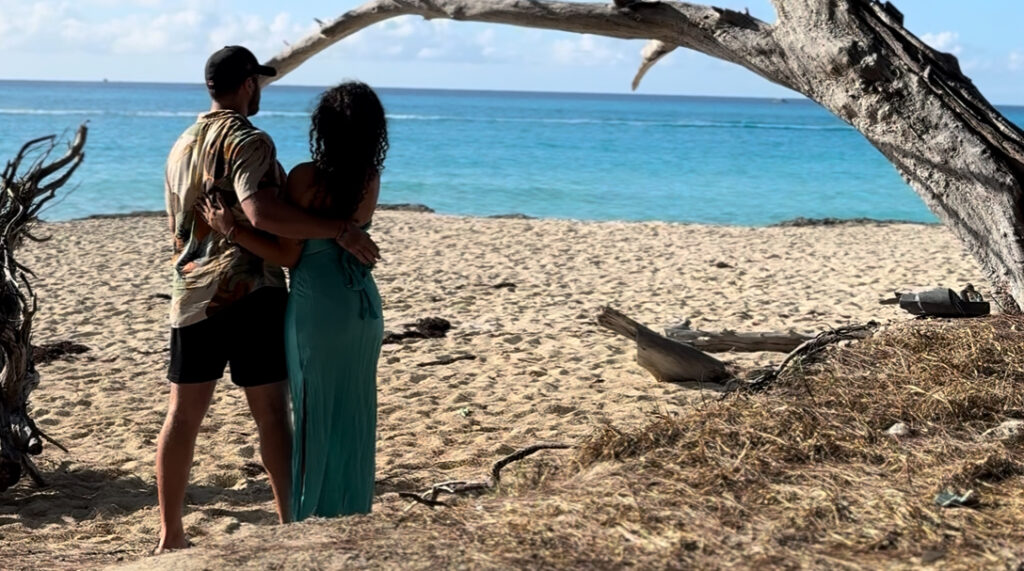
I’m Kam, the creator of Kam’s Travel and the face behind the YouTube channel Kam’s Kamera.
For more than a decade, I’ve been driven by a love for travel—whether I’m setting sail on the world’s top cruise lines or exploring new destinations on land.
My adventures have taken me from popular cruise ships to hidden gems around the globe, and I’m passionate about sharing every honest detail along the way.
I started this blog and my vlog channel because I believe travelers deserve real, unfiltered insights—not paid opinions or polished ads.
What you see and read here is always based on my firsthand experiences, with all the highs, lows, surprises, and lessons that come with true exploration.
Whether you’re planning your first trip or you’re a seasoned explorer, my goal is to offer genuine stories, practical tips, and raw feedback to help you make the most of your own adventures.
